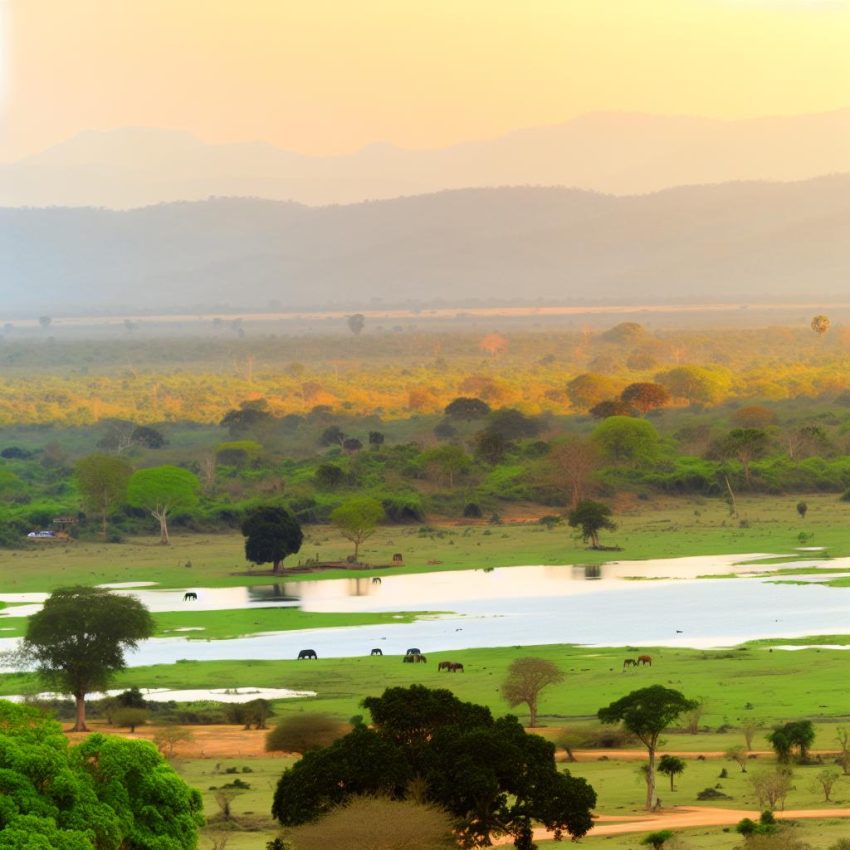Overview of Kabini Wildlife Sanctuary
The Kabini Wildlife Sanctuary, located in Karnataka, India, is a prominent destination for nature and wildlife enthusiasts. An essential section of the Nilgiri Biosphere Reserve, it stands out for its rich biodiversity. This sanctuary has gained acclaim particularly for its significant populations of elephants and leopards, which adorn its tropical ecosystem.
Geographical Location
Situated near the town of HD Kote in Mysore district, Kabini Wildlife Sanctuary sprawls across a landscape defined by lush forests and the iconic Kabini River. This river meanders through the sanctuary, serving as a crucial lifeline for the abundant wildlife, especially during the arid months. The proximity of the Kabini River enhances the sanctuary’s ecological richness, offering a vital water supply that sustains both flora and fauna during challenging seasons.
Flora and Fauna
The sanctuary’s thriving ecosystem boasts a blend of deciduous and semi-evergreen forests. This biome encompasses a variety of tree species such as teak, rosewood, and sandalwood. The diversity in flora is a crucial factor that supports an equally varied array of fauna.
Mammals within Kabini include not only elephants and leopards but also the majestic tigers, the robust gaur, and the Indian bison. A variety of smaller mammals such as dhole, barking deer, and sambar deer inhabit this verdant environment, demonstrating the extensive biodiversity endemic to this region. The presence of such diverse mammals highlights the sanctuary as a pivotal site for wildlife conservation.
Birds are equally abundant with over 250 species residing in the sanctuary. Ornithologists and bird watchers find Kabini a paradise, with species such as the vibrant painted stork, egrets, herons, and the critically endangered Oriental white-backed vulture calling this sanctuary home. This diversity makes it a critical haven for avian species, contributing significantly to global bird diversity.
Reptiles are yet another feature of the Kabini Wildlife Sanctuary. The marsh crocodile, along with various snake species, finds its habitat in this ecosystem. This aspect of herpetological significance further enriches the ecological tapestry of Kabini, offering insight into the various niches supported by its environment.
Best Time to Visit
The period from October to May is regarded as the ideal time for visiting Kabini. This timeframe encompasses the post-monsoon and winter months when the climate is mild and favorable for wildlife viewing. During these months, the probability of encountering wildlife is higher; the fauna are more active and visible, often converging around the river’s edge during the hot summer months in search of water. Consequently, these months offer the best opportunities for visitors to engage with Kabini’s vibrant wildlife.
Activities and Accessibility
Visitors to Kabini are greeted with a variety of activities designed to maximize their experience of the sanctuary’s diverse environment. Among the most popular is the jeep safari. These excursions enable tourists to penetrate deeper into the sanctuary’s natural heart, offering a unique opportunity to witness wildlife in its natural habitat from the safety of a guided vehicle.
Boat rides on the Kabini River present an alternative vantage point from which to appreciate the sanctuary’s landscapes and wildlife. These water-based excursions afford a different perspective of the sanctuary, with the potential to spot various species bathing or drinking at the water’s edge.
As for accommodation, there are a range of options available to suit all preferences and budgets. From luxurious resorts providing opulent comfort to budget-friendly lodges offering practical lodging solutions, there’s something for everyone. These accommodations ensure that visitors have convenient access to the sanctuary and its activities.
Regarding transportation, Kabini is accessible by various means. The nearest airport to the sanctuary is located in Mysore, approximately 60 kilometers away, providing a major hub for domestic travelers. For those preferring rail travel, the closest station is Nanjangud, situated about 50 kilometers from Kabini, facilitating connectivity with major cities.
For individuals planning a visit to Kabini, more comprehensive information can be obtained from the official Karnataka tourism website. Visit the website through this link to explore available options and start planning a trip to this spectacular wildlife sanctuary.
In summation, Kabini Wildlife Sanctuary offers an invaluable encounter with nature, presenting a delicate interplay of diverse flora and fauna amidst stunning landscapes. Its significance is not only in conserving endangered species but also in offering immersive experiences that foster greater appreciation for wildlife and their habitats. Whether one seeks the thrill of spotting a predator in the wild or the serenity of a scenic boat ride, Kabini provides an ideal setting for such encounters, making it a focal point of ecotourism and wildlife conservation in India.
